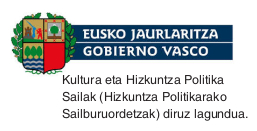Haur-depresioa Lehen Hezkuntzako etapan: zertan datzan eta irakasleek zer egin dezaketen
DOI:
https://doi.org/10.26876/uztaro.81.2012.4Gako-hitzak:
Depresioa · Haur-depresioa · Lehen Hezkuntza · IrakasleakLaburpena
Haurtzaroko depresioa ahalik eta lasterren detektatzea komeni da, bestela, larriagotu eta iraunkor bilakatu daiteke. Depresioaren nahasteak haurren garapen osasuntsuari ekar diezaiokeen arriskuaz jabeturik, bi helburu nagusi dituen artikulua idatzi dugu: batetik, Lehen Hezkuntzako irakasleei depresioari buruzko informazio eguneratua eskaintzea, eta, bestetik, depresio-sintomei aurre egiteko edota horien agerpena ahal den neurrian gutxitzeko Lehen Hezkuntzako irakasleentzat proposamenak egitea. Artikuluan zehar depresioaren ezaugarriak eta maiztasuna, depresio motak, depresioaren diagnostiko diferentziala, zergatiak, haren esku-hartzeari buruzko informazioa eta depresio-sintomei aurre egiteko gomendioak topa daitezke. Ondorio gisa zera esan daiteke, depresioaren gaiari eskolatik heldu nahi bazaio, interesgarria litzatekeela irakasleek psikologia positiboaren ezagutzan sakontzea.Deskargak
Lizentzia
Copyright (c) 2012 Uztaro

This work is licensed under a Creative Commons Attribution-NonCommercial-ShareAlike 4.0 International License.
Downloads
Argitaratua
2012-05-30
Aipuak nola egin
Soroa Udabe, M., Jauregizar Alboniga-Mayor, J., & Bernaras Iturrioz, E. (2012). Haur-depresioa Lehen Hezkuntzako etapan: zertan datzan eta irakasleek zer egin dezaketen. Uztaro. Giza Eta Gizarte-Zientzien Aldizkaria, (81), 61–77. https://doi.org/10.26876/uztaro.81.2012.4




















